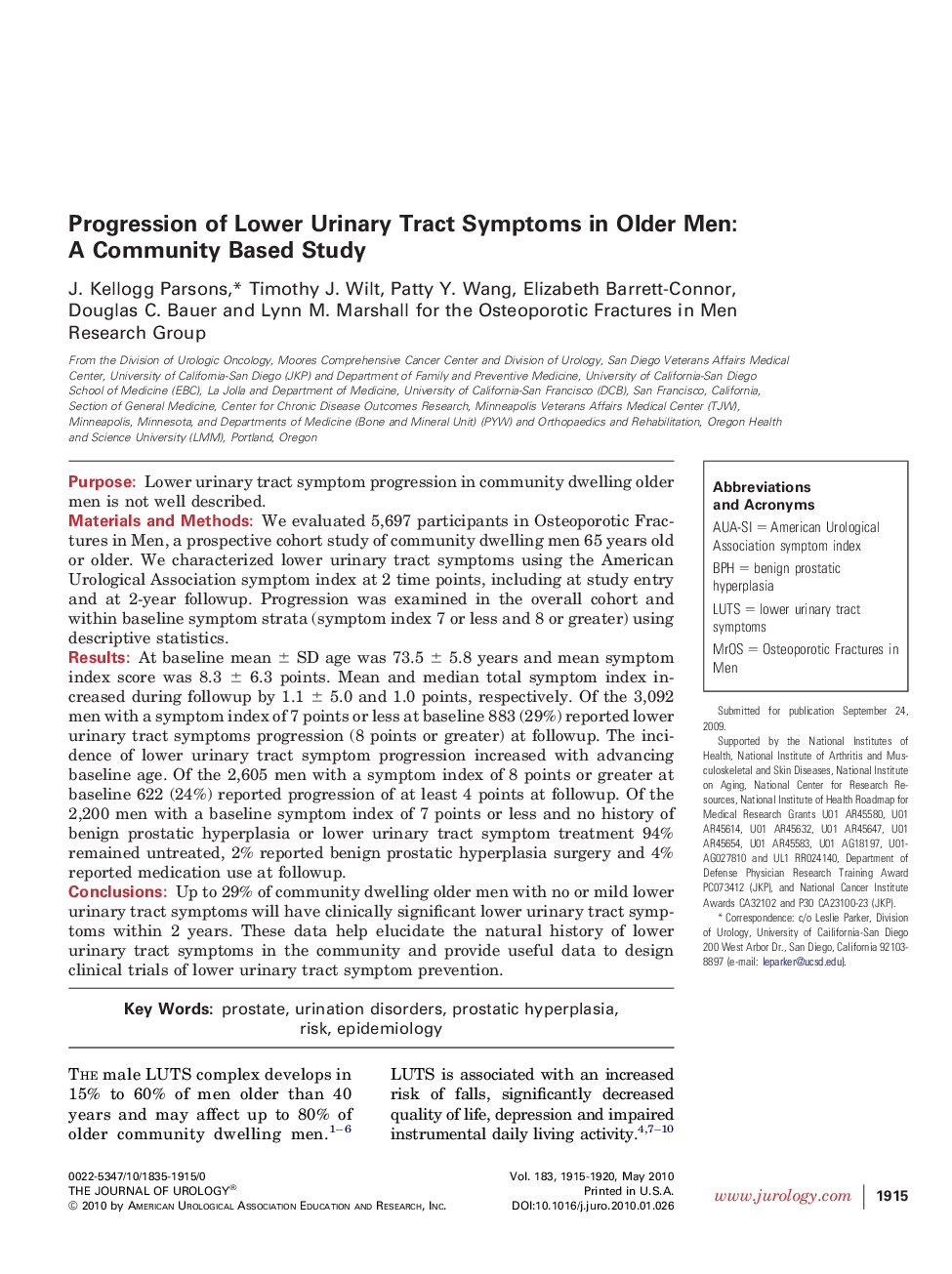| Article ID | Journal | Published Year | Pages | File Type |
|---|---|---|---|---|
| 3866534 | The Journal of Urology | 2010 | 6 Pages |
PurposeLower urinary tract symptom progression in community dwelling older men is not well described.Materials and MethodsWe evaluated 5,697 participants in Osteoporotic Fractures in Men, a prospective cohort study of community dwelling men 65 years old or older. We characterized lower urinary tract symptoms using the American Urological Association symptom index at 2 time points, including at study entry and at 2-year followup. Progression was examined in the overall cohort and within baseline symptom strata (symptom index 7 or less and 8 or greater) using descriptive statistics.ResultsAt baseline mean ± SD age was 73.5 ± 5.8 years and mean symptom index score was 8.3 ± 6.3 points. Mean and median total symptom index increased during followup by 1.1 ± 5.0 and 1.0 points, respectively. Of the 3,092 men with a symptom index of 7 points or less at baseline 883 (29%) reported lower urinary tract symptoms progression (8 points or greater) at followup. The incidence of lower urinary tract symptom progression increased with advancing baseline age. Of the 2,605 men with a symptom index of 8 points or greater at baseline 622 (24%) reported progression of at least 4 points at followup. Of the 2,200 men with a baseline symptom index of 7 points or less and no history of benign prostatic hyperplasia or lower urinary tract symptom treatment 94% remained untreated, 2% reported benign prostatic hyperplasia surgery and 4% reported medication use at followup.ConclusionsUp to 29% of community dwelling older men with no or mild lower urinary tract symptoms will have clinically significant lower urinary tract symptoms within 2 years. These data help elucidate the natural history of lower urinary tract symptoms in the community and provide useful data to design clinical trials of lower urinary tract symptom prevention.
